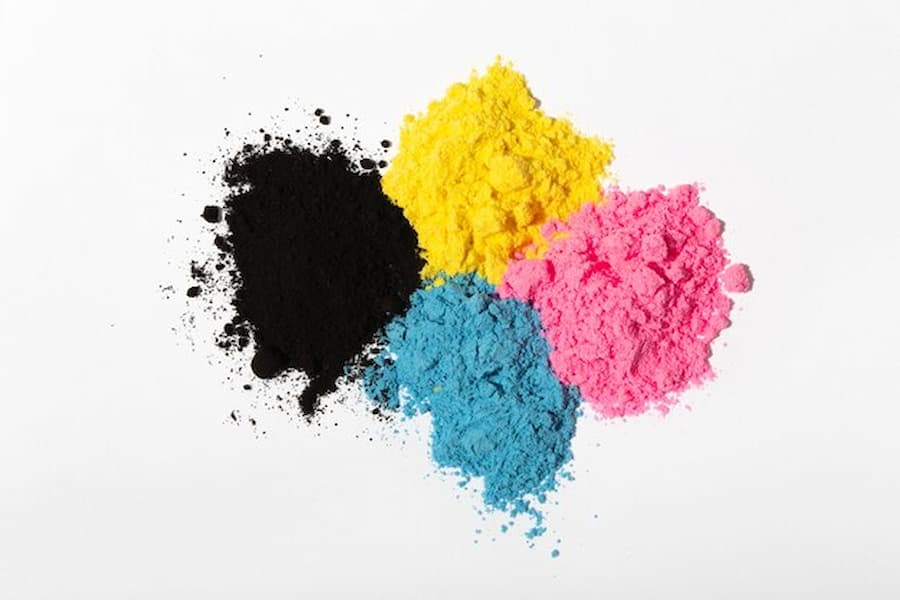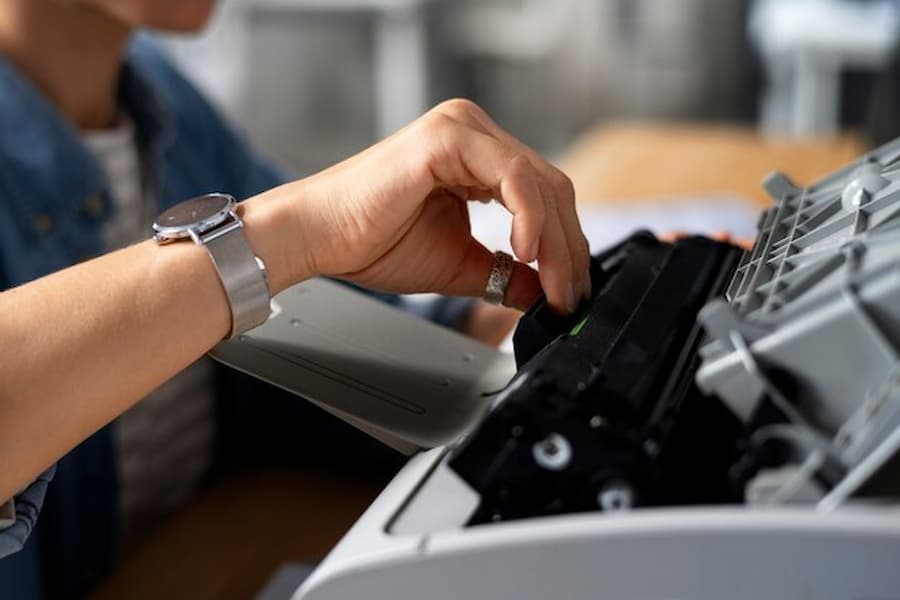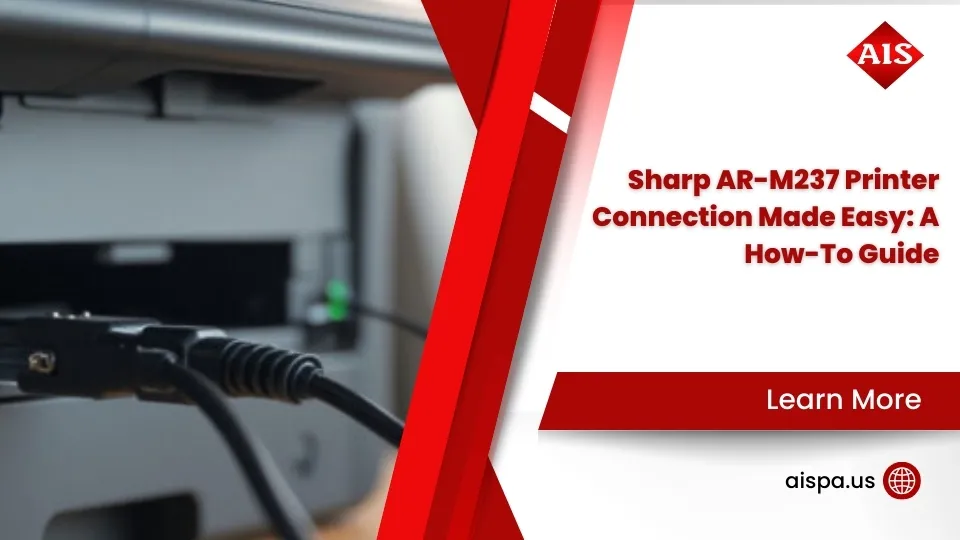How Long Does Printer Toner Last? – All Your Toner Expiration Questions Answered
How Long Does Printer Toner Last?
Welcome to the world of laser printing, where the intentional engineering of a toner cartridge can make it a veritable marathon runner of the printing realm. Imagine a diligent printer technician, meticulously inspecting every nook and cranny of a laser printer. The focus of their attention? The toner cartridge, a compact powerhouse that holds the potential to churn out thousands of pages.
Coated in a protective bag, the cartridge’s contents, a fine, dry toner powder, sits ready to fulfill any printing needs. The toner’s lifespan, unlike its inkjet counterparts, is a testament to resilience, capable of withstanding long periods without succumbing to the perils of drying out or clumping together.
Yet, the question still lingers in the air, as palpable as the scent of fresh ink – how long does printer toner last? The answer lies not just in the shelf life of the product, but also the nature of its use. The toner, once nestled inside the cartridge, can continue to function optimally for years, provided it is shielded from direct sunlight and extreme temperatures.
The number of pages per toner cartridge can vary greatly depending on the printer model, the type of toner used, and even the intricacies of what is being printed. With careful maintenance and mindful usage, the toner can last longer and continue to produce high-quality prints, allowing for the maximum page yield possible.
What Is Toner?
Delving into the fascinating world of inking mechanisms, it’s like a magical dance between color and technology. The ballet of an ink cartridge in action, dispensing liquid color onto paper, possesses an ephemeral beauty. Yet, the ink is a liquid’s fleeting nature, prone to drying out over extended periods of time, often leading to clogs within the print head and affecting print quality.
On the other spectrum, the granulated plastic particles, a powdered substance, make up the substance for a laser printer toner. Unlike their ink counterparts, they don’t evaporate or dry out. This gives them an edge for long-term use, especially for those who don’t use their printing equipment for extended periods.

If you’re considering buying a new printer, keep in mind that while an inkjet printer’s cartridges may promise many pages, they can become unusable if the ink dries out. The laser printer toner, on the other hand, can deliver up to 2500 pages before requiring replacement, depending on the model and make, including HP and Xerox.
That said, don’t let the expiration date on the toner and ink cartridges discourage you. Even past their expiration, they may still work as long as they’re kept in optimal conditions. If you’ve just replaced your old HP with a new one, the unopened, unused cartridges from the former can still be used, but remember to shake the cartridge gently to prevent the fine particles from clumping together within the cartridge. Also, make sure to keep your laser printer clean as it can extend the life of your toner cartridge.
Does Toner Expire?
Diving deeper, the question arises: how long does a toner cartridge last? Juxtaposing it to the reality of inkjets, the suitability of buying a laser with its enduring printer cartridge becomes evident. The ink and toner are two different entities; the former a liquid, prone to drying out, the latter a powder, resilient to the onslaught of time. HP laser is a prime example of this endurance, providing quality prints for long periods of time.
A printer toner cartridge like the OEM toner is a powerhouse of productivity. It allows for shelling out thousands of prints before it needs replacement, a feat, which inkjet cartridges could only dream of. But how many pages you can print is not a fixed number. It depends on the toner cartridge’s page yield, which is an approximate number of pages a new cartridge can print, usually given per page of 5% coverage.
The longevity of a toner would last is influenced by proper storage. Keeping your laser printer clean, storing the cartridges last in a cool, dry place and ensuring the protective bag is opened only when ready to use, all contribute to maximize their shelf life. Yet, it’s crucial to remember that if a toner cartridge expires, and still is used, it may lead to printer damage and void the warranty.
The toner may give a ‘low toner message’ even when there are enough pages they can print. A simple solution is shaking the cartridge gently to redistribute the toner. However, care should be taken not to touch the photoconductor drum, as it may lead to damage.
Toner Shelf Life – Is There a Way to Extend It?
Dive into a world wherein the longevity of your printing resources is extended. A realm where cleanliness reigns, nurturing the long toner and enhancing the dry ink’s performance. Get acquainted with the printer manual and harness the power of optimal printer settings. Every moment spent examining inkjet printers before deciding to buy a printer is a step towards maximizing the life of the printer ink.

Curate a conducive environment for toner storage, ensuring that the cartridge ink won’t clump together prematurely. A well-timed shake can distribute the ink evenly, letting the toner will last as long as possible.
Keep It Clean
Dusting off the cobwebs from the previous topic of toner expiration, let’s delve into the art of cleanliness in the context of your printing equipment. A pristine environment, free from the malevolent grasp of dust and debris, is paramount for your printing unit to function optimally.
Embrace a routine of regular maintenance, akin to the morning ritual of brushing your teeth. Your printing device will thank you for it, rewarding you with its enduring loyalty for a long time. Remember, the aim is to prevent the accumulation of waste toner. This unwanted residual villain can wreak havoc on the device’s delicate components, reducing the number of pages per cartridge.
Remember, when purchasing a toner, it’s crucial to be aware of the potential threats that can compromise its integrity. Moisture, the notorious nemesis of many pages per cartridge, can infiltrate the cartridge, leading to clumping of the powder. This clumping can severely impede the performance of the printing mechanism, leading to its premature demise.
A word of caution, though. Printer manufacturers often provide guidelines on how to clean their devices. Adhere to these instructions diligently, lest you inadvertently cause damage.
Lastly, know how many pages your cartridge can produce. This information can help you gauge when replacement ink will be needed.
Learn Your Printer Settings
Transitioning from the concerns of expiration, let’s delve into the realm of settings within our trusty workhorse. Fear not, for understanding them can allow anyone to use their printer for a long time.
The complex world of settings may seem daunting. However, let the fear dissipate as we enter this maze of options and features. Recognize that the printer may come off as a complicated machine, but it’s merely a tool waiting for the right command.
Correctly set preferences can dramatically impact how long the black powder can serve longer than ink. The key lies in knowing what settings to adjust and when to do so.
Dive into the sea of options and explore the lesser-known depths. Discover the magic hidden in the ‘Print Quality’ settings, capable of extending the life of the black powder. The ‘Draft’ or ‘Eco’ mode is a prime example, using less of the black powder but still offering readable text.
Advanced settings might hold options to adjust the density. Lowering the density reduces the amount of black powder used per print, thus extending its life.
Be the ultimate master of the printing world. Remember, proper knowledge of settings can elongate the usage of the black powder. Get to know these settings now, and let the machine serve you better, longer.
Toner Storage
Moving on from the question of whether consumables become unusable, let’s explore the optimal storage conditions for these vital printing components. Properly stowing away these extras is key to ensuring their optimal performance when the time comes to use them.
To begin, cleanliness is paramount. Keep the print consumables free from dust, as dust particles can affect the smoothness of their application onto paper. Moisture, a sworn enemy of these printing essentials, needs to be kept at bay. Proper storage away from dampness prevents the powder within these items from sticking together, hence preserving their functionality.
The way these print consumables are positioned during storage matters too. Laying them flat, rather than upright, ensures an even distribution of the powder within, leading to consistent print quality over time.
Light exposure is another factor to consider. It’s advisable to stash away these items in a place that is not exposed to harsh light to prevent degradation caused by heat and light.
Lastly, do note that temperature plays a role too. A cool room temperature provides the ideal environment for storage, keeping these consumables in the best shape possible until they are needed.
Give It a Good Shake
So, with all the cleaning, setting adjustments, and careful storage, it’s come down to the final grains of the imaging substance clinging obstinately to the inner walls of the consumable unit. Don’t fret just yet, a technical trick might save the day. A good shake can work wonders! Picture the scene: a seasoned technician, with deft hands, smoothly extracts the consumable from its home, cradling it with care. A firm grip established, the unit is jolted from one side to the other, a rhythmic dance that dislodges the stubborn pigment particles from within.
This vigorous shaking action can coax the remaining pigment grains to redistribute themselves within the unit, offering a chance to squeeze out those few extra copies needed. Be mindful though, handle with care and don’t be too rough, as it could cause unintended damage. Keep the motion gentle and controlled, akin to that of a bartender mixing a cocktail. And voila! With some luck and a bit of technique, the machine might just churn out a few more copies before necessitating a replacement.
Laser Printers (Toner) vs Inkjet Printers (Ink) for Infrequent Use
Pivoting from the concept of toner longevity, let’s examine the comparison between devices utilizing toner versus those employing liquid colorants, especially when it comes to infrequent deployment.
In a realm where usage is not habitual, apparatuses employing powdered pigment takes the laurels. These units do not falter in their ability to deliver when left inactive for significant durations. Unlike their liquid counterparts, they don’t get obstructed by solidified colorants. Maintaining the liquid-based machines demands meticulous cleansing.
Without the imminent presence of a use-by date, there is no necessity to continually invest in new pigment containers, discarding older containers filled with solidified colorants. A powdered pigment container sits patiently, primed for action even after extended idle periods.
The powdered pigment container does not have a use-by date like its liquid counterpart, making it a more economical choice in the long run. There is no need to continually replace old colorant containers with new ones, as the powdered pigment container remains ready for use even after extended idle periods.
Furthermore, the powdered pigment apparatuses offer consistent performances even after extended periods of non-use. On the other hand, the liquid-based machines need regular maintenance to prevent clogging.
The powdered pigment apparatuses prove to be a superior choice for infrequent use due to their reliability, consistency, and longevity. Not only do they save the user from the hassle of regular maintenance and the cost of frequent replacements, but they also deliver high-quality results every time.
How Many Pages per Toner Cartridge Can I Print?
Transitioning from the comparison of laser and inkjet machines, let’s delve into another crucial aspect – the productivity potential of the pigment reservoirs. While the intricate world of printing technology might appear daunting, understanding these aspects can make one a savvy consumer.
In the realm of printing, productivity hinges upon the capability of the black or color reservoirs. The standard yield reservoirs designed for everyday use often exhibit an output potential between 2,500 and 4,000 sheets. This estimate, though, is based on a mere 5% coverage, which translates to roughly a third of a sheet filled with double-spaced text.
When pushed to their limits with dense pages brimming with minuscule text or elaborate graphics, the output might dwindle drastically. In such scenarios, the reservoirs might only manage to deliver around 1,000 sheets.
For those who prioritize volume, the market offers high-capacity pigment reservoirs. These behemoths are capable of churning out up to 12,000 sheets, again based on a modest 5% coverage. It is worth noting that the actual output may vary significantly, influenced by factors like the make and model of the machine, the printing preferences set by the user, the type of printing task (be it text documents or photos), and whether it’s a color or monochrome job.
While the potential of pigment reservoirs can estimate the printing capacity, the actual number often depends on the type of printing tasks and the settings used. Therefore, understanding these aspects before purchase can ensure optimal utilization of the reservoirs and guaranteeing a smooth printing experience.
Conclusion
Decoding the world of printing materials, a thorough understanding of their durability and functionality becomes paramount. The existence of an expiration date, strategies to prolong their endurance, and the sharp contrast between different types of devices for sparse use all play into the equation.
Finally, a clear comprehension of the output capacity of each unit of print material is essential. Every element of these facts and figures contributes to an educated decision-making process when it comes to selecting the right printing resources.
For more information and services you can contact us for a free quote and estimation.
- Address: 165 Veterans Way, Warminster, PA 18974
- Email: sales@aispa.us
- Call Us: (215) 999-8445











